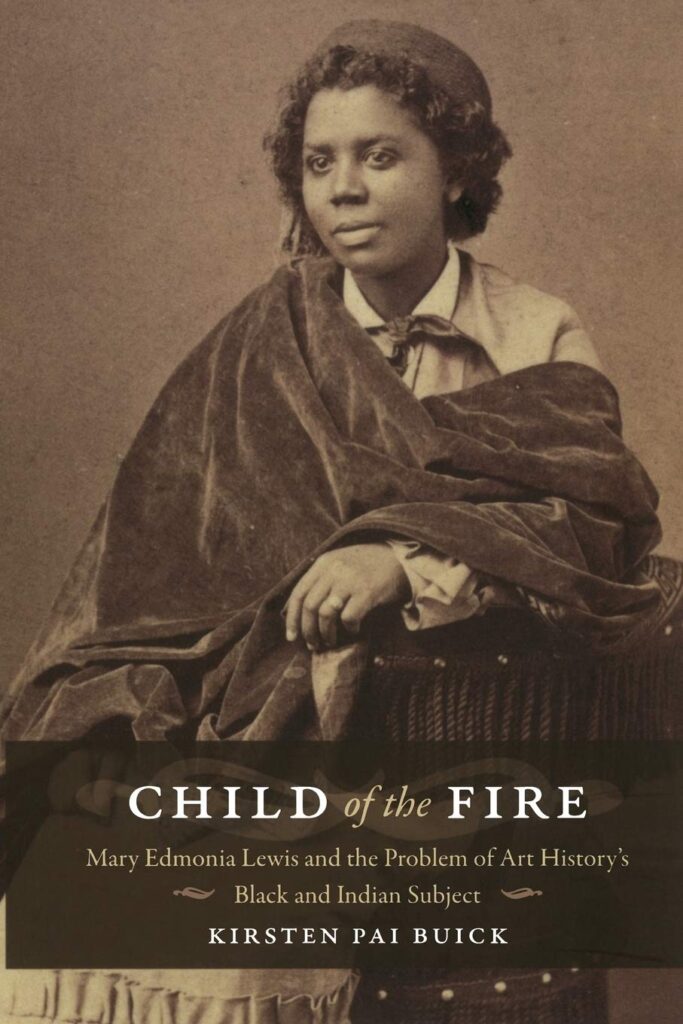Episode: 198: Edmonia Lewis
Edmonia Lewis was a sculptor; an artist. Period. Despite getting attention as a female sculptor of mixed race, the first Black and Native American professional sculptor in the world- she wanted to drop the descriptors and simply be known for her work.

Edmonia in Rome, Circa 1870
Mary Edmonia Lewis was born on July 4, 1844, in Greenbush (now known as Rensselaer) New York to Samuel and Catherine Mike Lewis. She had an older, half-brother (also named Samuel) and even untangling this bit of information has been a battle for historians. Edmonia was a great sculptor and a wise marketer who knew what subjects to focus on that would sell, and what story to give any reporter sitting in front of her that would get her attention even if it was contradictory to previous interviews. There were no journals or cache of letters left to spell out the truth of her life, so it’s still being puzzled together 215 years after her death.
What is known is that her father was Black, her mother was Native American and they both passed away when Edmonia was a child. She was raised by maternal relatives, and educated aaaaalmost through college at Oblerlin, thanks to her brother who funded her education from wealth earned during the California Gold Rush.
After a move to Boston and some advantageous introductions to a community of abolitionists (and abolition art collectors) she began her career as a sculptor, earned enough to move to Rome (after a European, Grand tour) and set up her own studio that was so important it was literally on the map of Must See places tourists should visit.

Edmonia had to learn anatomical sculpting the old-fashioned way, by copying masters’ work like this one of Moses by Michelangelo.
Her neoclassical style, combined with subjects that focused on both her Black and North American Indigenous heritage, busts of famous people…and also of people who commissioned her services…set her on a path to artistic superstardom.

She did a series of pieces focused on Indigenous Americans, this is Old Arrow Maker, but Hiawatha was also a popular subject of hers. Smithsonian

And honoring her heritage and the Emancipation Proclamation, Forever Free, 1867, remains one of her most popular pieces. Howard University
Rome provided a community of artisans and, more importantly, a community of ex-pat, women sculptors that allowed Edmonia to have an active, colorful, and productive life. Her statutes were sold all over the world, appeared at worlds’ fairs (oh yes, including *that* one) and she was a global celebrity…
…who faded into the ether after about 20 years, and soon dropped from popularity into obscurity. We flesh out all the details in the episode, but Edmonia died in London on September 17, 1907. She was 63 years old.

Created for the 1876 Centennial Exposition in Philadelphia, Death of Cleopatra had quite an adventure after the fair. Smithsonian American Art Museum
Time Travel With The History Chicks
Books!

By Harry Henderson and Albert Henderson

By Kirsten Pai Buick

Middle grade: by Jasmine Walls and Bex Glendining

A verse novel, by Jeanine Atkins
Web!
A wealth of information from a self-proclaimed “independent scholar” about Edmonia, including some back story on some of her most famous works, at Discovering Edmonia Lewis, including this lovely (and easy to understand) explanation of NeoClassical art and the artists who used the style in innovative ways.
The website maintained by authors of Edmonia Lewis: A Narrative Biography is at Edmonia Lewis.com.
A peek into one of Edmonia’s trips to the US, to Cincinnati in 1878 is fun to see how she worked to market her pieces, how she moved in American society, and sold one piece in particular, Veiled Bride of Spring, on the website Queens of Queen City
Would you like to join us as we visit that statue of Ben Franklin and remember Edmonia…and a whole week of more fun and history in Boston and Newport this October? Check out the tour at Like Minds Travel, spaces are filling fast!



